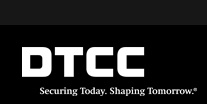Last week DTCC made an announcement they would, as of July 15, 2016, no longer support FICC trades that go across clearing banks. The text of the announcement can be found at GCF Repo® Service – Suspension of Interbank Trading. What does this mean and what is the history behind this?
FICC repo trading that takes place between dealers using different clearing banks (e.g. JPM Chase vs. Bank of New York Mellon) still involves extensions of credit from those clearing banks. Clearers have completed the task of reducing extensions of credit on intra-clearer trades, but cracking the inter-clearer nut was harder. Based on what they wrote in 2014, it doesn’t seem like the Fed was very optimistic about this problem getting solved.
From the Federal Reserve publication A Primer on the GCF Repo® Service, Part 2: The Financial Plumbing of GCF Repo® Service, Staff Report No. 671 April 2014, Revised May 2014
“…For the interbank case, clearing banks extend credit to FICC to unwind all interbank GCF Repo positions. The proposed settlement change outlined earlier does not address this basic issue. There are two unusual aspects to this intraday credit extension to FICC. First, the amount of the credit necessary to unwind these transactions is equal to the total net amount of interbank GCF Repo, which can be quite large. In recent history, this amount has been quite variable and occasionally reaches the tens of billions of dollars. Second, the amount of credit extended to FICC is not a result of FICC’s actions, but rather of dealers’ trading. Consequently, any restrictions on the amount of credit extended to FICC could only be enforced if constraints are placed on dealers’ trading behavior. How the clearing banks will handle the intraday credit extensions to FICC to settle interbank GCF Repo trades has not been determined…”
The New York Fed’s Update on Tri-Party Repo Infrastructure Reform, June 24, 2015 made it clear that this was a high priority.
“…the subset of GCF repo transactions that occur between dealers at different clearing banks are still unwound at 8:30 am, and still require uncapped, discretionary extensions of intraday credit by the clearing banks to settle. This is a potential source of market instability in periods of stress…”
And from the recent DTCC Notice:
“…The last integration step was to address the current interbank GCF Repo settlement process, which relies on large amounts of intraday credit from both Clearing Banks to FICC to facilitate settlement. All collateral that is settled via interbank is unwound the next morning to FICC’s account at the pledging bank in order to make the collateral available for “intrabank” substitutions. In order to facilitate this process, the Clearing Banks currently extend credit each business day to FICC at no charge…”
The solutions being contemplated simply did not satisfy the Fed and the plug has been pulled. From the DTCC Notice:
“…Recently, FICC was advised that the Sub Hub has been determined not to be feasible due to potential lengthy development timelines and, therefore, will not be moving forward. Because the current interbank settlement cannot be supported given the cost of intraday credit facilities and operational constraints involved in potentially capping the activity, FICC will no longer operate the interbank functionality after the Suspension Date…”
What are the practical implications? The market share for tri-party clearing is skewed, with most estimates around 85% BNYM / 15% JPMC. For dealers, not being able to easily trade across clearers may mean having to establish parallel clearer relationships or simply migrate to where they can most efficiently operate. Will this mean the 15% moving to BNYM? The cost and angst of changing up the technology should not be underestimated; but will dealers have any choice? Is there going to be a long tail of other services that may also be impacted? Eliminating cross-clearer trading will also make it harder for balance sheet netting of repo positions, a point brought up by Jeff Kidwell. When DTCC allows RICs to participate in FICC, the parallel structure will add even more complexity.
We have also heard that the difficulty of cross-clearer trading and the extensions of credit they create have been a obstacle to the creation of other repo CCPs. FICC looks a lot like a repo CCP insofar that it guarantees trades and nets exposures, but there are also some differences between how they and, say, a derivatives CCP operate. We wonder if there is more to this than the Fed finally saying “no mas” to inter-clearer tri-party.


